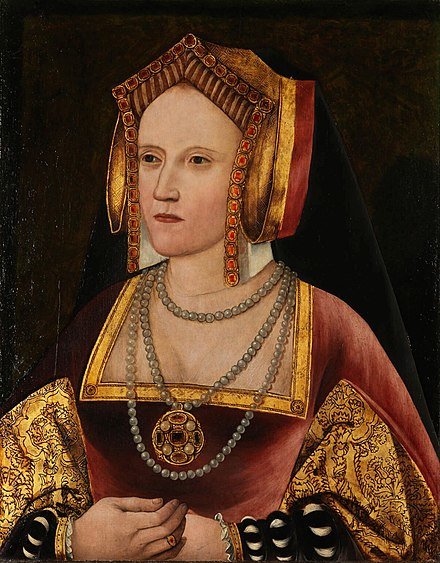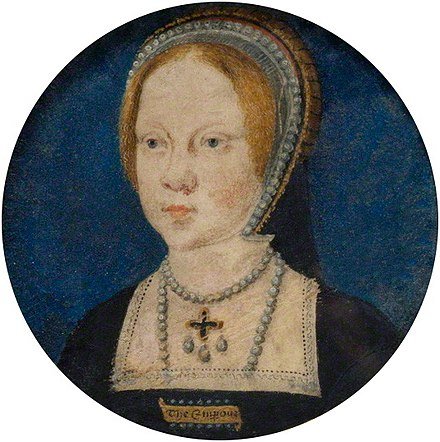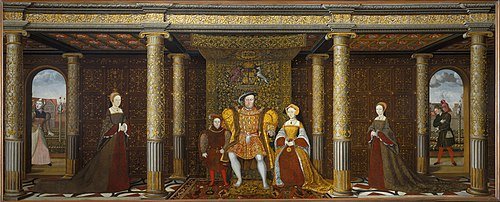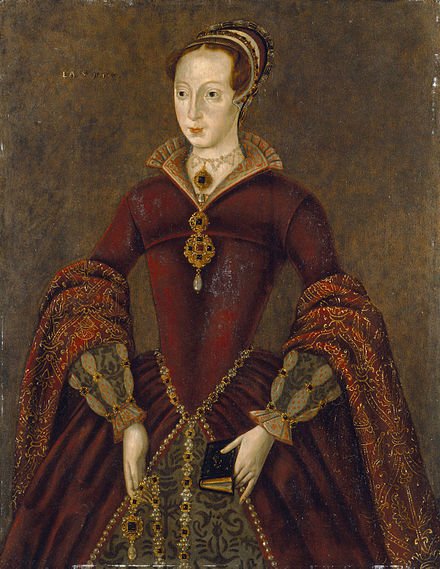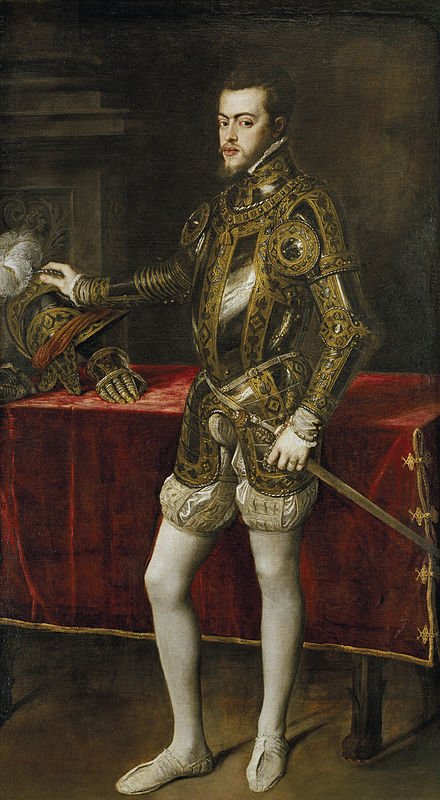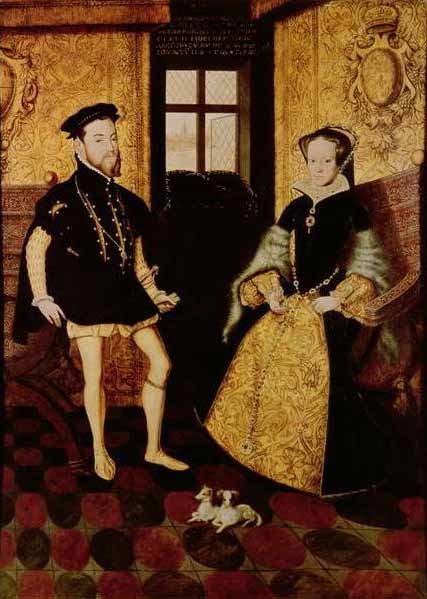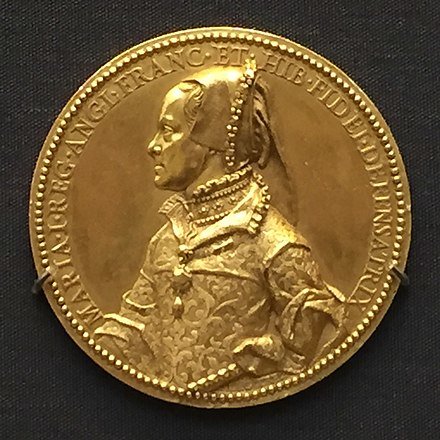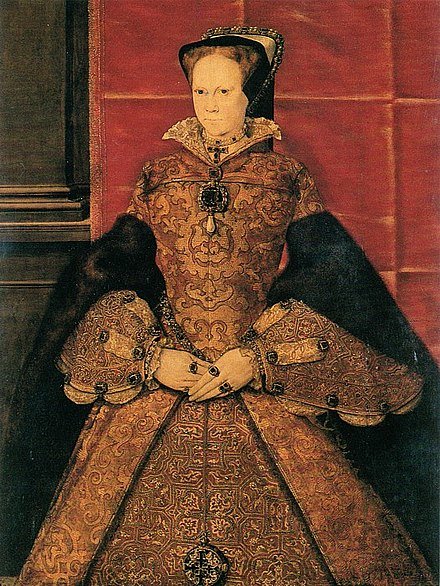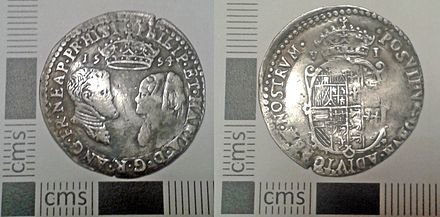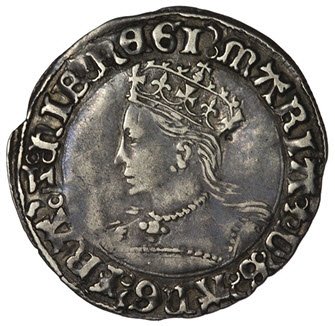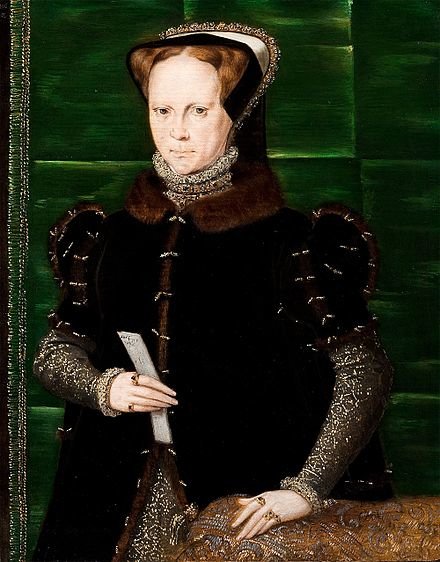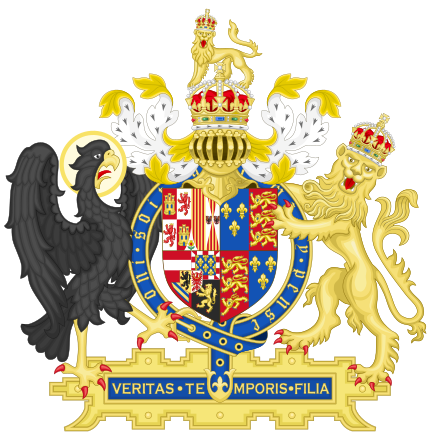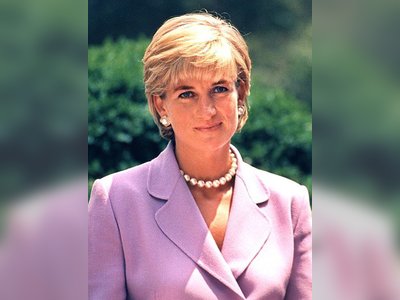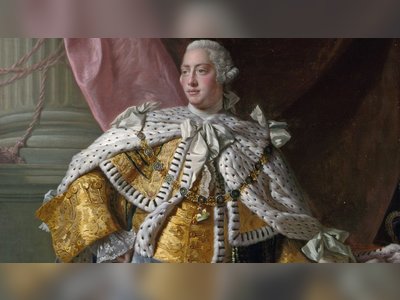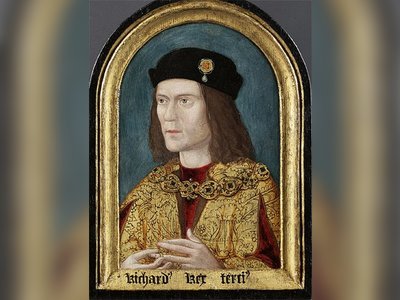British Heritage
Remember, Cherish, Learn.
beta
Mary I of England "Bloody Mary"
The Defining Force in Shaping British Religious Heritage.
Mary I of England, known to many as Mary Tudor or the infamous "Bloody Mary," was born on February 18, 1516, in Greenwich, England. She came into the world as the sole surviving child of the formidable King Henry VIII and his first consort, Catherine of Aragon. From 1553 until her demise in 1558, Mary ruled as England's first queen regnant, an era marked by profound religious tumult as she sought to undo the Protestant revolutions initiated by her father and half-brother.
Educated meticulously, Mary developed an early fluency in multiple languages and an extensive grasp on subjects like theology and philosophy. Catherine of Aragon, her mother, was a fervent Catholic and the primary influence in shaping Mary's own steadfast religious beliefs. However, the idyll of her early childhood was disrupted by her parents' marital dissolution. In 1533, King Henry VIII annulled his marriage to Catherine, banishing her from the royal court and leaving an indelible mark on the young princess.
Mary, as Henry VIII's only surviving offspring, was initially seen as his rightful heir. This standing, however, wavered under the king's relentless pursuit of a male successor. His union with the Protestant Anne Boleyn created a schism with the Catholic Church, leading to the establishment of the Church of England. The staunchly Catholic Mary found herself unable to accept this new religious institution, causing a rift with her father, who perceived her non-compliance as an implicit challenge to his authority.
On her half-brother Edward VI's death in 1553, Mary ascended the throne, inheriting a kingdom profoundly shaped by Protestant influences. Undeterred, she was resolved to restore Catholicism to England, an endeavor that began immediately after her coronation. Her alliance through matrimony with Philip II of Spain, an equally devoted Catholic, stirred up widespread resentment. Furthermore, her rigorous efforts to reinstate Catholicism culminated in the persecution of numerous Protestants. The brutality of these times earned her the moniker "Bloody Mary," an emblem of the religious strife that characterized her reign.
Notwithstanding her intense endeavors, Mary couldn't entirely resurrect Catholicism in England. Her reign is often considered a period of failure, primarily due to her harsh treatment of Protestants that resulted in countless martyrdoms. Her unpopular rule inadvertently fueled the growth of Protestantism. However, her reign occupies an indisputable place in the annals of English history, marking the first occasion of a woman ruling the kingdom in her own right. Elizabeth I, her successor, leveraged this legacy, establishing a stable Protestant realm.
In retrospect, the reign of Mary I of England was a tumultuous era of religious strife as she struggled to reimpose Catholicism upon England. Although her efforts largely fell short and her rule sparked the acceleration of Protestantism, Mary carved out her place in history as England's first reigning queen. Her reign, marred by conflict yet underscored by her dedication to her faith, presents an intriguing chapter in the unfolding narrative of British heritage.
Formative Years and the Shadow of Faith
Educated meticulously, Mary developed an early fluency in multiple languages and an extensive grasp on subjects like theology and philosophy. Catherine of Aragon, her mother, was a fervent Catholic and the primary influence in shaping Mary's own steadfast religious beliefs. However, the idyll of her early childhood was disrupted by her parents' marital dissolution. In 1533, King Henry VIII annulled his marriage to Catherine, banishing her from the royal court and leaving an indelible mark on the young princess.
A Tenuous Bond: Mary and Her Father
Mary, as Henry VIII's only surviving offspring, was initially seen as his rightful heir. This standing, however, wavered under the king's relentless pursuit of a male successor. His union with the Protestant Anne Boleyn created a schism with the Catholic Church, leading to the establishment of the Church of England. The staunchly Catholic Mary found herself unable to accept this new religious institution, causing a rift with her father, who perceived her non-compliance as an implicit challenge to his authority.
A Reign Bathed in Blood and Faith
On her half-brother Edward VI's death in 1553, Mary ascended the throne, inheriting a kingdom profoundly shaped by Protestant influences. Undeterred, she was resolved to restore Catholicism to England, an endeavor that began immediately after her coronation. Her alliance through matrimony with Philip II of Spain, an equally devoted Catholic, stirred up widespread resentment. Furthermore, her rigorous efforts to reinstate Catholicism culminated in the persecution of numerous Protestants. The brutality of these times earned her the moniker "Bloody Mary," an emblem of the religious strife that characterized her reign.
A Complex Legacy: Mary's Unyielding Influence
Notwithstanding her intense endeavors, Mary couldn't entirely resurrect Catholicism in England. Her reign is often considered a period of failure, primarily due to her harsh treatment of Protestants that resulted in countless martyrdoms. Her unpopular rule inadvertently fueled the growth of Protestantism. However, her reign occupies an indisputable place in the annals of English history, marking the first occasion of a woman ruling the kingdom in her own right. Elizabeth I, her successor, leveraged this legacy, establishing a stable Protestant realm.
In retrospect, the reign of Mary I of England was a tumultuous era of religious strife as she struggled to reimpose Catholicism upon England. Although her efforts largely fell short and her rule sparked the acceleration of Protestantism, Mary carved out her place in history as England's first reigning queen. Her reign, marred by conflict yet underscored by her dedication to her faith, presents an intriguing chapter in the unfolding narrative of British heritage.
- Mary I of Englanden.wikipedia.org


